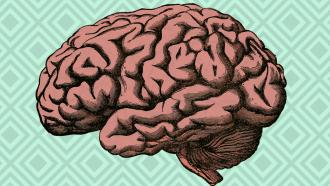
Researchers develop a model called EMPaSchiz to accurately predict schizophrenia
The 2001 film, A Beautiful Mind, depicts how John Nash, a Nobel Laureate in Economics, battled paranoid schizophrenia, the most common type of schizophrenia. It is a chronic mental disorder that affects how a person thinks, feels or behaves, thus upending not only the life of those suffering from it but all those close to them. The cause of the disease is not yet well understood, and most treatments focus on treating the symptoms rather than the disease. In a recent study, researchers from the University of Alberta, Canada, and the National Institute of Mental Health and Neuro Sciences (NIMHANS), Bengaluru, have proposed to use artificial intelligence to help predict schizophrenia cases.
The symptoms of schizophrenia usually begin in young adulthood and express themselves gradually. Most often, this condition is diagnosed based on the individual’s observed behavior, either from personal experiences or reports from those that are familiar with him/her. This process can lead to a misdiagnosis because the clinical manifestations of schizophrenia overlap with other psychiatric diagnoses. In the current study, published in the journal Schizophrenia, the researchers use data from magnetic resonance imaging (MRI) of affected individuals brains to provide an objective and evidence-based identification and management of the disorder.
Although there are similar diagnostic models that use data from patients who are on antipsychotic drug treatments, they are not reliable, as antipsychotics are known to affect the function and activity of the brain. Hence, the diagnosis could be erroneous. The model proposed by the researchers in this study is called EMPaSchiz (read as ‘emphasis’) and uses data from the MRI scans of 81 patients, who were diagnosed to be schizophrenic, but were not yet treated with antipsychotic drugs.
The study found that there were disrupted connections in the brain of individuals diagnosed with schizophrenia—an observation consistent with the ‘dysconnectivity hypothesis’. The hypothesis proposes that there may be disruptions between the prefrontal cortex and the other regions of the brain. The prefrontal cortex is the region of the brain associated with complex cognitive behaviour, personality expression, decision making, and moderating social behaviour. Any disruption in this region, as observed in those with schizophrenia, is linked to the impaired cognitive function and behaviours that are associated with the disorder. Further analysis also found that the transfer of information between the neurons via the synapse may be defective, leading to hallucinations and delusions in those with this disorder.
EMPaSchiz was found to be accurate in almost 9 of 10 tested cases and out-performed earlier machine learning models that were built to diagnose schizophrenia. The researchers report that EMPaSchiz is the first model to trained and validated using only data from patients that hadn’t used antipsychotics before. Previous research suggests that low direct current delivered via electrodes on the head to the regions where these abnormalities exist, could improve the severity of auditory hallucinations. The future use of machine learning techniques to analyze brain connectivity may be useful in developing markers that may help develop markers that could accurately diagnose schizophrenia.






